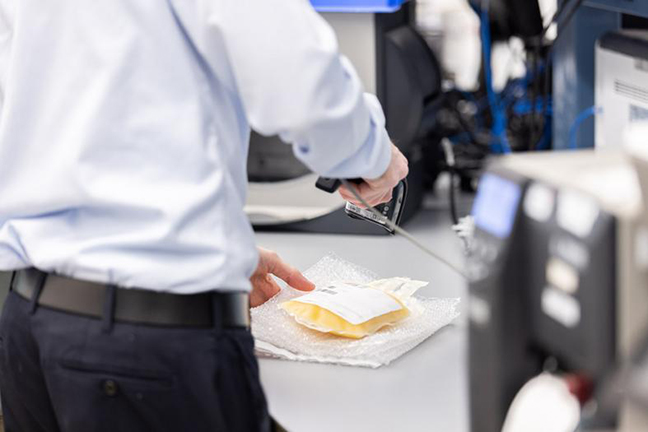Cryoprecipitated Antihemophilic Factor, also called cryo, is a portion of plasma, the liquid part of our blood. Cryo is rich in clotting factors, proteins that can reduce blood loss by helping to slow or stop bleeding. The blood clotting proteins found in cryo include:
- Fibrinogen
- Factor VIII
- Factor XIII
- Von Willebrand factor
Cryo is used to prevent or control bleeding in people whose own blood does not clot properly. This includes patients with serious but rare hereditary conditions such as Hemophilia A (who lack factor VIII) and von Willebrand disease (who lack von Willebrand factor).
Cryo is also a source of fibrinogen for patients who cannot produce the necessary amount of this important clotting protein on their own. A patient may be given a cryo transfusion if they have low levels of any of the clotting proteins it contains. Low levels of clotting proteins put the patient at risk of severe or uncontrolled bleeding.

Unlike other blood components, synthetic (man-made) versions have been developed for several of the clotting factors found in cryo. Some physicians prefer to use these synthetic proteins when they are available. Today, cryo obtained from donated plasma is most commonly given to patients who need fibrinogen.
Cryo-only donations are not possible. Cryo is prepared from donated plasma. The plasma is first frozen and then it is slowly thawed. Cryo is the insoluble portion, or precipitate, that remains when the liquid portion of the plasma drains away. The precipitate is collected and then combined with contributions from other donors until it reaches a sufficient volume for transfusion. It can be stored for up to a year.
Compatible Blood Components for Transfusion
There are no ABO/D specific criteria for the Cryoprecipitate component of blood.
For more information about our products, for example the AABB Technical Manual and the Circular of Information for Blood and Blood Components visit the AABB website.



